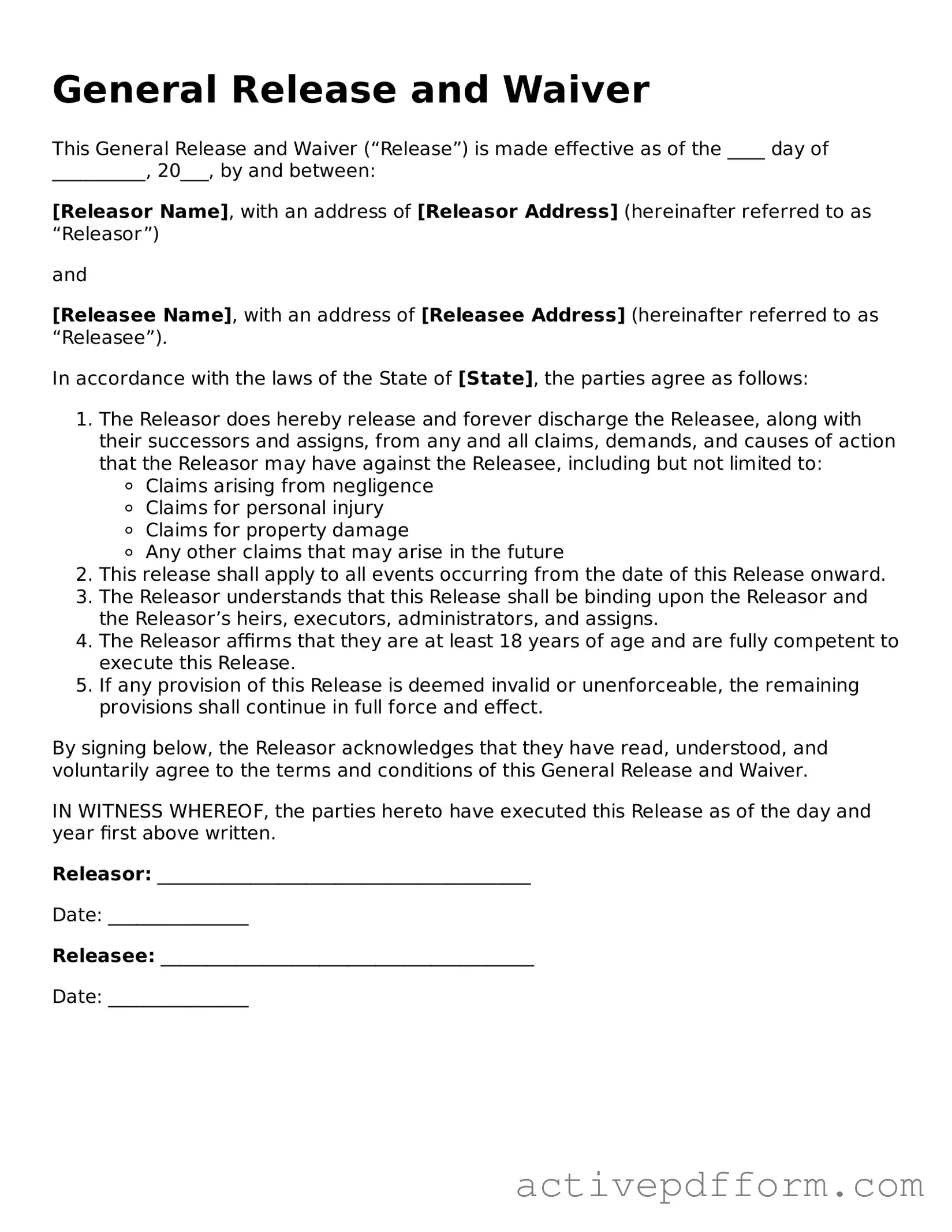What is a General Release and Waiver form?
A General Release and Waiver form is a legal document that allows one party to release another party from any future claims or liabilities. It is commonly used to protect individuals or organizations from lawsuits or claims that may arise from specific activities or events.
When should I use a General Release and Waiver form?
This form is typically used in situations where there is a potential risk of injury or damage. Examples include sports activities, events, or any scenario where participants may be exposed to risks. It’s a way to ensure that participants acknowledge the risks and agree not to hold the organizer liable.
Who needs to sign the General Release and Waiver form?
Generally, anyone participating in an activity that poses potential risks should sign the form. This includes participants, volunteers, and sometimes even spectators, depending on the circumstances. If minors are involved, a parent or guardian must sign on their behalf.
What does the General Release and Waiver form cover?
The form covers a wide range of potential claims, including personal injury, property damage, and any other liability that might arise from the activity. It essentially releases the organizer from responsibility for incidents that occur during the event or activity.
Is the General Release and Waiver form legally binding?
Yes, when properly executed, the General Release and Waiver form is legally binding. However, its enforceability can depend on various factors, such as clarity of language, the understanding of the parties involved, and adherence to local laws. It’s advisable to consult with a legal professional to ensure it meets all necessary requirements.
Can I modify the General Release and Waiver form?
Yes, you can modify the form to fit your specific needs. However, any changes should be clear and precise. Avoid altering the fundamental purpose of the document, as it could affect its validity. Consulting with a legal expert is recommended when making modifications.
What happens if someone does not sign the General Release and Waiver form?
If a participant does not sign the form, they may not be allowed to participate in the activity. The release serves as a protective measure for the organizer. Without it, the organizer may be exposed to potential legal claims from the non-signing participant.
Can a General Release and Waiver form be revoked?
Generally, once signed, the release cannot be revoked. However, if a participant can demonstrate that they were coerced or did not understand the terms, there may be grounds for revocation. Always ensure that participants fully comprehend the document before signing.
How do I ensure that the General Release and Waiver form is effective?
To ensure effectiveness, use clear and concise language. Make sure all participants have the opportunity to read and understand the form before signing. It’s also important to keep a signed copy for your records. This documentation can be crucial in case of any disputes.
Where can I obtain a General Release and Waiver form?
You can find templates for General Release and Waiver forms online or through legal document providers. Many organizations also have their own versions tailored to specific activities. Make sure any form you use complies with local laws and regulations.
